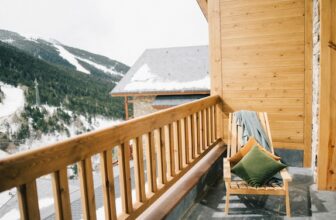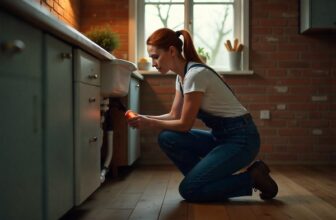
In concerns the improvement of the exterior or interior design, artificial turf provides a beautiful and minimal-invasive solution. But that is not the end of it as not all artificial grass is the same. It is therefore very important to identify the right kind as this will define the appearance and durability of any installation. Whether you’re shopping for your home, office, or commercial space, here are 5 essential tips to help you choose quality artificial grass, especially if you’re considering purchasing from an artificial grass wholesaler in Dehradun :
1. Consider the Material Quality
However, the important thing that should remain in mind while selecting an artificial grass is the quality of the material. Synthetic grass can be made from a number of forms of synthetic materials such as polyethylene, polypropylene as well as nylon. All these materials possess unique properties that determine the endurance, feel and look of the grass.
Polyethylene: It is a versatile material that is well known for it’s texture and it rather closely resembles the skin. It is long-lasting and does not wear out quickly as the other products and therefore can be used for both commercial and residential places.
Polypropylene: This material is somewhat cheaper but also can be characterized as less wear-resistant. It may be applied in areas where the grass is intended to be used for beautification where it will not be subjected to traffic.
Nylon: This kind of artificial grass is made from nylon and will not easily break which makes it very strong to support children at play and pet animals. Though, it is affirmed that the material is costlier as compared with the other materials most of the time.
2. Check the Pile Height and Density
One of the considerations that determine the extent of artificial grass is its height as well as its density level. Pile height may be defined as the length of the blades of grass in the pile while pile density describes the closeness of blades of grass in the pile.
Pile Height: When you want to achieve a look that is more natural and realistic then you should go for an artificial grass with pile height between 30 to 40mm. While digging, shorter pile heights could appear neater but they could also be less realistic.
Density: If you are able to afford it, high density artificial grass with more fibre per square inch of the grass, will have a fuller and more realistic look. It is also long lasting and can handle the pressures of foot traffic better than the other.
Good artificial grass should have a reasonable pile height and reasonable density so as to look good to the eyes and should be able to afford the functions it is expected to perform.
3. Evaluate the Backing Material
The substrate base material used to support the artificial grass is also an important aspect that is ignored by most people but is very crucial in determining the performance of the grass. The backing supports the grass fibers and influences the drainage, and that is important for the outdoor applications.
Primary Backing: This is where the grass fibers are tufted. Look for a strong, woven backing that can securely hold the fibers.
Secondary Backing: This layer adds another top layer to minimize flexing and enhance rigidity which adds reinforcement to the frame. It is highly durable and when added to the artificial grass then it ensures that the product lasts longer.
Drainage: Other features include the quality of the floor as well as the drainage system in order to avoid the accumulation of water which causes odors and damages. It should also be noted that the backing must have sufficient perforations for water to drain well.
4. Consider UV Resistance
Outdoor artificial grass is usually subjected to sun’s heat for longer periods than indoor artificial grass. This aspect is important to avoid the grass to fade or to get a poor quality as a result of Continued exposure to UV light.
UV Stabilization: The specific form of artificial grass should be one which has been processed with UV stabalizers. Such chemicals prevent fiber from degrading under the effects of the ultraviolet light from the sun.
Longevity: UV stabilised artificial grass does not fade, shrink or stretch hence you do not need to reinvest after a number of years.
5. Check for Safety Features
Another factor is safety, more so when the artificial grass will be fitted in such places where children or pets spend most of their time. Some safety features to look for include:Some safety features to look for include:
Non-Toxic Materials: Make sure there is no use of hazardous chemicals as well as heavy metals that could affect the health of the people who will be using the artificial grass.
Fire Resistance: The fire-resistant artificial grass can slow down the progress of fire, which will be additionally protecting your area.
Softness: For play areas, use synthetic turf that has a much softer surface so children will not easily get hurt in the event that they fall.
Due to the above factors, it helps you understand that artificial grass, when installed safely for people, is always safe for all those who will be using it.
Conclusion
There are important factors that have to be taken into consideration when selecting artificial grass and they include material used, height of the pile, backing material, resistance to UV and safety concerns. With these tips and advice from the professionals at the best interior wholesaler shop in Dehradun offering the required services, such as Easy Build, you will join those who make the right choice that will make your space better, using artificial grass that requires no maintenance and looks great. Perhaps, you need a new lawn, maybe, your desire is to provide a safe ground for kids to play on or may be, you want to add a touch of green to your indoors; the choice of the artificial grass is a decisive factor in determining the appearance and texture of the ground.









